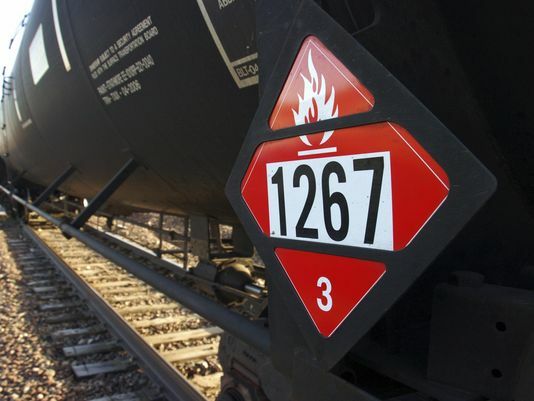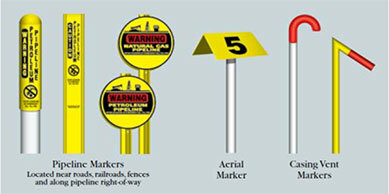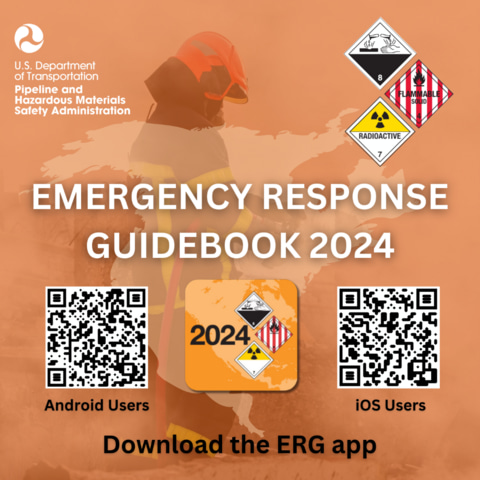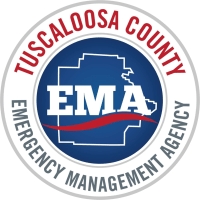
If You See a Spill:
If you see an 18-wheeler or another type of vehicle (e.g. placarded tank, dump truck) leaking a product, please call 911 and report it. Do not touch any leaks or attempt to contain them (evacuate or stay at a safe distance) unless you are trained to do so.
If You Spill:
As a truck driver/carrier or business that is leaking the product, there are no penalties for reporting a spill unnecessarily, but there may be significant penalties for not reporting one.
Who to Call:
- Remember to call 911 or your local fire department.
What to Report:
When reporting a hazardous material spill or release, please include the following in your call:
- Your name, location, organization, and telephone number
- Number and types of injuries or fatalities (if any)
- If personnel have been exposed to the spill, give details on the extent of exposure and any injuries or symptoms the victim(s) may be experiencing
- Types of material(s) released or spilled or description of placards (a placard example is like the picture above)
- Quantity of materials released or spilled
- What is the spill impacting (e.g. land, water) affected by the release or spill
- Danger or threat posed by the release or spill (schools or daycare nearby, nearby waterways)
- Name and address of the party responsible for the incident; or name of the carrier or vessel, the railcar/truck number, or other identifying information
- Date and time of the incident
- Location of the incident
- Source and cause of the release or spill
- Any other information that may help emergency personnel respond to the incident (e.g. wind direction)
Other Resources:
- If the issue takes place in the City of Tuscaloosa, individuals can call 311 or 205-248-5311. (e.g. my neighbor is burning items, someone is dumping junk on an empty lot, and someone moving land without a permit)
- Alabama Department of Environmental Management (ADEM) general complaint, (205) 942-6168, or click here.
- For tips on sheltering in place during a chemical release, visit Local Emergency Preparedness Committees (LEPC).
- A PDF version to review or download, of the EMERGENCY RESPONSE GUIDEBOOK (ERG) can be found by clicking here.
- U.S. Department of Transportation Hazardous Materials Training Publications
Remember: If you are on a hazmat scene and feel you are in danger, please safely evacuate. If told to shelter in place, click here to see the steps needed to do so. If you evacuate let first responders know you were in the area in case you may have been exposed.
Pipeline Leak or Rupture

If you plan on digging:
Call 811 before digging to ensure it is safe to do so and keep you from being liable for damages.
For Signs of a Pipeline Leak or Rupture: Not all signs need to be present to indicate a leak.
- Remember to Look, Listen, and Smell
- Dead or discolored vegetation, stains, or liquid on the ground near the pipeline, dirt being blown into the air, dense white cloud or fog, or frozen ground near the pipeline
- Colorful sheens on water surfaces, bubbles coming from bodies of water or standing water
- Hissing or roaring sound
- Strong petroleum scent, mild fragrant odor (Ethanol), or other pungent odor such as sulfur (rotten eggs or garlic-like); Natural Gas may also be odorless
- Fire coming out of or on top of the ground or explosion
If you suspect a leak or a leak occurs, you should:
- Leave the area immediately in an upwind direction and warn others to stay away
- If near a school, evacuate students and staff from the area immediately as outlined in the school's emergency response plan
- Do not light a match, start an engine, use a telephone or cell phone, or turn on/off any electrical appliances, and avoid potential ignition sources, which may cause an explosion or fire
- Once you are a safe distance away from the potential leak use a telephone or cell phone to call 911 and the number you may have seen on the marker
- Do not drive into an area where you suspect a leak, and do not touch or operate pipeline valves
- Avoid making contact with escaping liquids or vapors as potential hazards may include eye, skin, and respiratory irritation and the product may be highly flammable
- Do not turn any seen pipeline valves
It is a federal crime to damage, remove, or destroy a pipeline marker.

